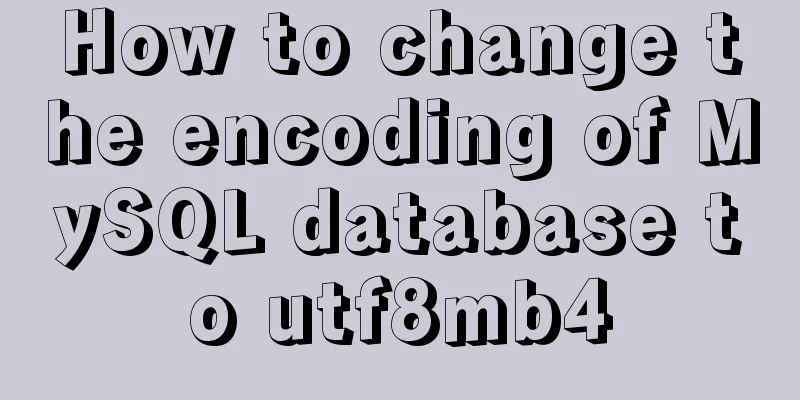A brief discussion on the use of Web Storage API

1. Browser local storage technologyIn addition to the earliest use of cookies for local storage, modern browsers use the Web Storage API to facilitate key/value storage. Web Storage has two storage methods: 1.1, sessionStorageFor each access source, a separate storage area is maintained. As long as the browser is not closed, the data will not disappear. So this kind of storage is called session storage. Note that the meaning of session here is different from that of server-side session. The sessionStorage here is only local storage and will not transfer data to the server. The storage capacity of sessionStorage is much larger than that of cookies, which can reach 5MB. 1.2、localStorageSimilar to sessionStorage, it is also used for data storage. The difference is that the data stored in localStorage will not disappear when the browser is closed. I can clear localStorage by setting an expiration time, deleting it manually using javascript, or clearing the browser cache. These two storage methods are used through Window.sessionStorage and Window.localStorage. In fact, let's look at the definition of Window:
Window inherits WindowLocalStorage and WindowSessionStorage, so we can get sessionStorage and localStorage directly from Window. For each origin, Window.sessionStorage and Window.localStorage will create a new Storage object for reading data. 2. Web Storage related interfacesThere are three interfaces related to web storage. The first is the window just mentioned. We can get sessionStorage and localStorage through window. The second one is the Storage object. Both Storage objects obtained are Storage objects.
interface Storage {
readonly length: number;
clear(): void;
getItem(key: string): string | null;
key(index: number): string | null;
removeItem(key: string): void;
setItem(key: string, value: string): void;
[name: string]: any;
}We can see that the Storage object provides us with many useful methods to access data. The third one is StorageEvent, which triggers the StorageEvent event when storage detects changes. 3. Browser compatibilityLet's use two pictures to see the compatibility of these two storages in different browsers: Window.localStorage:
Window.sessionStorage:
As you can see, modern browsers basically support these two storage features. If we are using an older browser, such as Internet Explorer 6, 7 or other browsers not listed, we need to detect whether Storage is effectively supported by the browser. Let's see how to do the test:
function storageAvailable(type) {
var storage;
try {
storage = window[type];
var x = '__storage_test__';
storage.setItem(x, x);
storage.removeItem(x);
return true;
}
catch(e) {
return e instanceof DOMException && (
// everything except Firefox
e.code === 22 ||
//Firefox
e.code === 1014 ||
// test name field too, because code might not be present
// everything except Firefox
e.name === 'QuotaExceededError' ||
//Firefox
e.name === 'NS_ERROR_DOM_QUOTA_REACHED') &&
// acknowledge QuotaExceededError only if there's something already stored
(storage && storage.length !== 0);
}
}The type is localStorage or sessionStorage, and we catch the exception to determine whether there is a valid Storge object. Let’s see how we use it:
if (storageAvailable('localStorage')) {
// Yippee! We can use localStorage awesomeness
}
else {
// Too bad, no localStorage for us
}4. Incognito ModeMost modern browsers support an incognito mode in which data privacy options such as browsing history and cookies are not stored. So this is incompatible with Web Storage. So how to solve this problem? Different browsers may use different solutions. For example, in Safari, Web Storage is available in incognito mode, but nothing is stored. Some browsers also choose to clear all previous storage when the browser is closed. Therefore, during the development process, we must pay attention to the different processing methods of different browsers. 5. Using the Web Storage APIFor Storage objects, we can directly access the properties in the object like ordinary objects, or we can use Storage.getItem() and Storage.setItem() to access and set properties. Note that the key values in the Storage object are all of string type. Even if you enter an integer, it will be converted to a String. The following examples can all set a colorSetting property:
localStorage.colorSetting = '#a4509b';
localStorage['colorSetting'] = '#a4509b';
localStorage.setItem('colorSetting', '#a4509b');Although all three methods can achieve storage and access functions, we recommend using the Web Storage API: setItem, getItem, removeItem, key, length, etc. In addition to setting the values in Storage, we can also trigger and listen to StorageEvent. Let's take a look at the definition of StorageEvent:
interface StorageEvent extends Event {
readonly key: string | null;
readonly newValue: string | null;
readonly oldValue: string | null;
readonly storageArea: Storage | null;
readonly url: string;
}Whenever a Storage object sends a change, a StorageEvent event is triggered. Note that if the sessionStorage changes, it will not be triggered. If a page in a domain has a Storage change, then other pages in the domain will monitor the change. Of course, if it is other domains, this StorageEvent cannot be monitored. We can add storage events through the addEventListener method of window, as shown below:
window.addEventListener('storage', function(e) {
document.querySelector('.my-key').textContent = e.key;
document.querySelector('.my-old').textContent = e.oldValue;
document.querySelector('.my-new').textContent = e.newValue;
document.querySelector('.my-url').textContent = e.url;
document.querySelector('.my-storage').textContent = JSON.stringify(e.storageArea);
});In the above example, we get the key, oldValue, newValue, url and Storage object from StorageEvent. The above is a brief discussion of the details of using the Web Storage API. For more information about the Web Storage API, please pay attention to other related articles on 123WORDPRESS.COM! You may also be interested in:
|
<<: How to deploy LNMP & phpMyAdmin in docker
>>: MySQL 8.0.15 installation graphic tutorial and database basics
Recommend
How to set a fixed IP address for a VMware virtual machine (graphic tutorial)
1. Select Edit → Virtual Network Editor in the me...
Vue implements paging function
This article example shares the specific code of ...
Install Tomcat on Linux system and configure Service startup and shutdown
Configure service startup and shutdown in Linux s...
Design a simple HTML login interface using CSS style
login.html part: <!DOCTYPE html> <html l...
Detailed explanation of the top ten commonly used string functions in MySQL
Hello everyone! I am Mr. Tony who only talks abou...
Tutorial on downloading, installing and deploying Tomcat to IDEA (with two hot deployment setting methods for IDEA)
Table of contents Tomcat Download Tutorial Tomcat...
Full analysis of Vue diff algorithm
Table of contents Preface Vue update view patch s...
Tutorial on installing mysql under centos7
Recently, I plan to deploy a cloud disk on my hom...
Detailed explanation of Linux server status and performance related commands
Server Status Analysis View Linux server CPU deta...
How to use CSS to fill the parent container div with img images and adjust the container size
When multiple images are introduced into a page, ...
Detailed explanation of group by and having in MySQL
The GROUP BY syntax can group and count the query...
How to enable Flash in Windows Server 2016
I recently deployed and tested VMware Horizon, an...
How to use MySQL DATEDIFF function to get the time interval between two dates
describe Returns the time interval between two da...
The ultimate solution for writing bash scripts with nodejs
Table of contents Preface zx library $`command` c...
Vue.js Textbox with Dropdown component
A Textbox with Dropdown allows users to select an...











